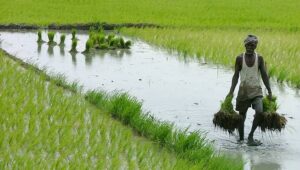
Importance of Agricultural Technology
Modern agriculture technology has become vital to improving farm productivity and boosting yields. These technologies include advanced mechanisation, Artificial Intelligence, and remote sensors.
They allow farmers to better monitor their fields from afar and can also prevent problems before they even occur. These advances are key to addressing growing world population and sustainable food production.
Genetically Modified Crops
Modern agriculture technology has helped farmers to grow better crops and reduce their environmental footprint. These technologies can include drones, advanced tractors, autonomous robots, automated harvesters and separators, weeding equipment, precision farming sensors, and more. Many of these tools and techniques allow farmers to work more efficiently by taking over menial tasks that take up too much time. This allows them to focus on other more important aspects of the business, and can even increase their profit margins.
Genetically modified crops are a great example of how agricultural technology can improve crop production. Through genetic engineering, scientists have been able to create plants that are resistant to pests and droughts, making them more valuable to consumers. They can also produce more food per acre than non-GMO crops.
The use of agricultural technology in the UK can help to solve many of the world’s most pressing problems, including climate change and rising energy, labor, and nutrient costs. This technology can improve the sustainability of agriculture by reducing the amount of water, fuel, and fertilizer needed to grow crops. It can also improve yields by ensuring that the right amount of each resource is applied to each plant, preventing waste and saving money. In addition, it can provide farmers with powerful predictions about weather conditions and prices, helping them to make well-informed decisions.
Drones
Drones, also known as unmanned aerial vehicles, are becoming increasingly important in agriculture. They can scan a field and identify issues like pests, disease, or nutrient deficiencies. This information can then be used to take corrective measures. For example, if a crop is suffering from an infection, a drone can drop seeds, fertilizers, and nutrients into the affected area. In addition, they can also help reforest areas that have been devastated by fires. Reforestation efforts that would take humans around 300 years can be completed in much less time using this technology.
This type of agricultural technology can increase crop yields and decrease the use of chemicals. It also helps farmers monitor the soil’s health and improve their irrigation systems. Moreover, this technology can help farmers avoid overfertilizing their crops. It can even cut down on pollution by reducing the amount of chemical sprays and pesticides used in crop production.
However, there are some barriers that hinder the adoption of this technology in developing countries. These include limited access to information about new technologies, lack of insurance and capital markets, high market transaction costs, land tenure insecurities, and transportation infrastructure. Nevertheless, increased research spending and improving the enabling environment for agricultural innovation can make it easier for farmers to adopt these new technologies. Ultimately, this will lead to better food production and healthier people.
Artificial Intelligence
While technology has always been prevalent in agriculture, more advanced machines and genetic manipulation techniques are helping farmers become more efficient. From using fewer resources to getting better results, these technologies help them boost their profits. In addition, these advancements are also helping farmers reduce their environmental footprint. This includes lowering the amount of chemicals they use, as well as cutting down on carbon emissions.
However, it is important to note that these advances have not reached all areas of the world yet. In fact, they have mostly impacted large-scale farms in high-income countries. It is imperative that frontier technologies be made more accessible to smallholder farmers. This can be done by providing them with real-time and precise data that they need to make informed decisions throughout their farming cycle.
For instance, a system that combines AI with sensors can track livestock movements and identify any anomalies, such as a sudden change in behavior. This information can be used to prevent disease outbreaks and improve food quality. Similarly, ear-tag systems from providers like Smartbow and Allflex can provide data on a cow’s temperature, heart rate, blood pressure, and other indicators to detect any illnesses.
Additionally, agricultural tech can be used to monitor soil conditions and microclimates in order to predict crop yield. This is known as precision agriculture and can be implemented with the help of drones, advanced tractors, and more. These technologies can also be used for weeding, milking, and distributing agrochemicals.
Minichromosome Technology
One of the most exciting discoveries in agriculture technology comes in a very small package. Agricultural geneticists can use minichromosome technology to add dozens of traits to plants, including herbicide tolerance, drought resistance, and better nitrogen usage. This helps reduce the reliance on pesticides and other toxic chemicals that pollute soil and water supplies.
These advances also allow farmers to optimize their operations and become more sustainable. These new technologies have the potential to dramatically increase crop production and improve food quality. Moreover, they can also help reduce the impact of global hunger and poverty.
This is especially important as the world’s population continues to grow exponentially. Traditional agricultural methods tend to exploit natural resources faster than they can be renewed, leading to ecological imbalance and a decline in wildlife populations. This trend will continue to accelerate as the world’s population grows, requiring more and more food every year.
In order to meet these growing demands, agriculture must utilize the latest technological advancements to enhance plant growth and increase productivity. These include better seed varieties and more resistant crops, as well as agricultural software and hardware that facilitates field-to-table distribution and logistics. These tools can also help farmers foresee threats to their crops and plan accordingly. For example, agricultural satellite technology can provide high-resolution images of fields and detect any deviations from a predetermined crop production plan.


